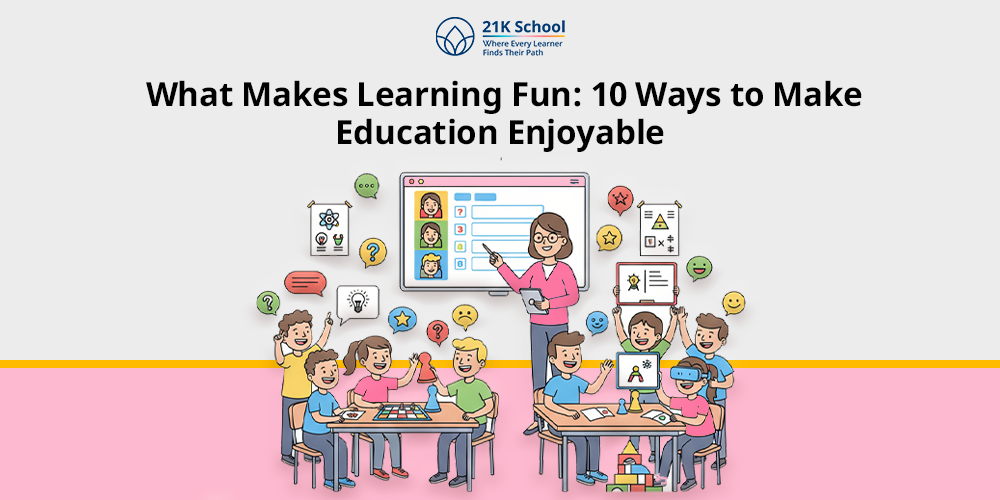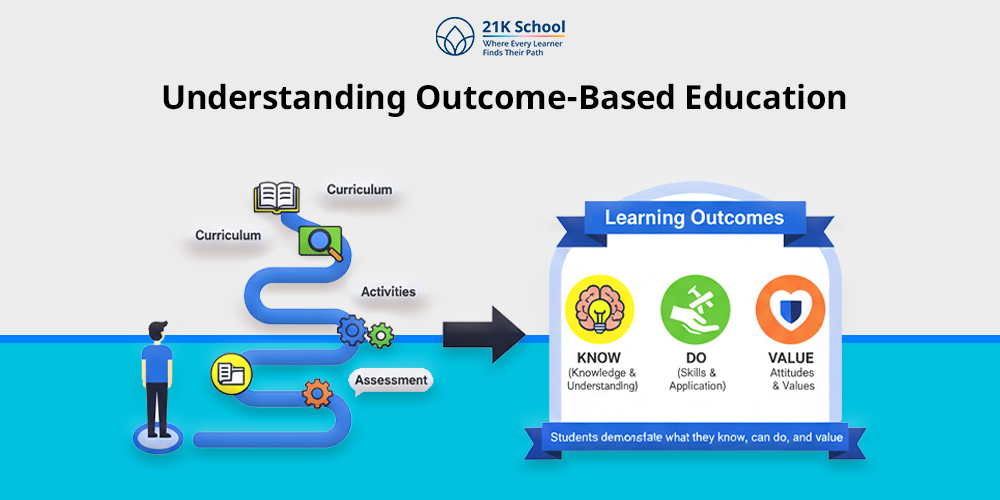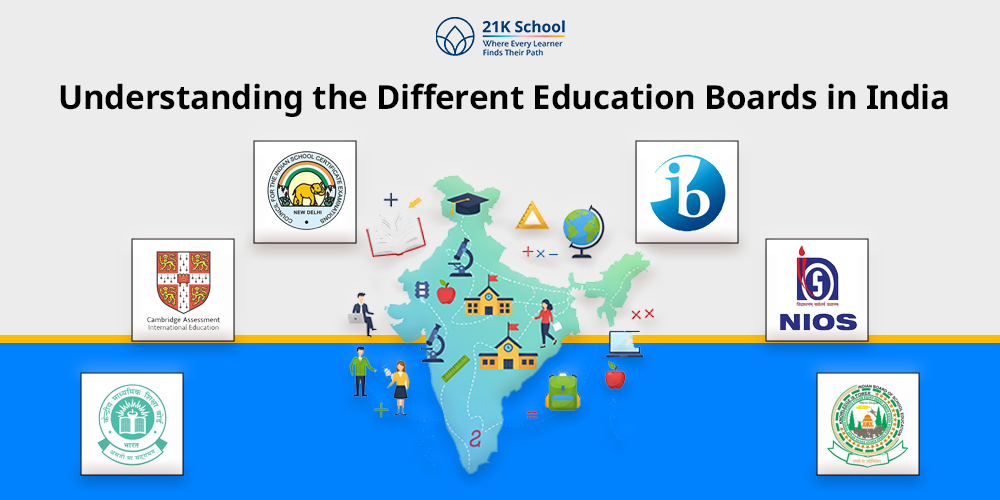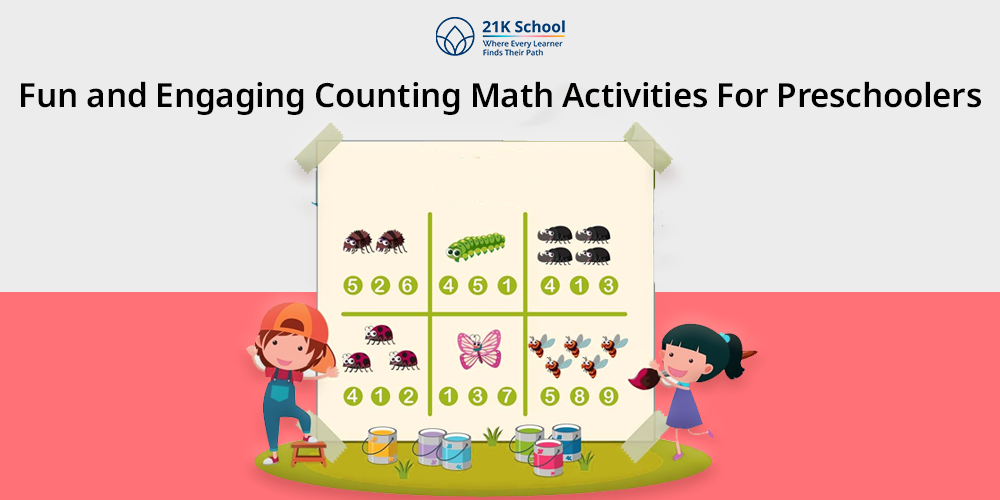
Have you ever wondered why kids feel difficulties in subjects like math? Learning maths in early school can be a great solution to secure the future.
Learning “how to count” is one of the earliest and most essential math skills children develop. It is the foundation for number recognition in preschool.
For preschool kids, the most effective method of building counting skills is through hands-on, playful experiences that implement everyday lifestyle and lots of movement.
To make your child comfortable with counting here we will explore 18 fun and engaging counting math activities that are perfect for preschoolers.
Whether you are a parent seeking effective support for your child’s early learning or a preschool facilitator planning for student engagement, these counting activities will keep your little learners entertained and excited about numbers.
Table of Contents
- 18 Counting Math Activities For Preschoolers
- 1. Counting Nature Walk
- 2. Number Hunt
- 3. Building Blocks for Counting
- 4. Dominoes
- 5. Button Counting
- 6. Sticker Math
- 7. Blocks
- 8. Hopscotch
- 9. Counting Dice
- 10. Counting Puzzles
- 11. Counting Songs
- 12. Counting with Fruits and Vegetables
- 13. Football Counting Game
- 14. Hidden Shapes
- 15. Ladybug Busy Bag
- 16. Nature Counting
- 17. Shape Hunt
- 18. Fill A Cup
- Conclusion
18 Counting Math Activities For Preschoolers
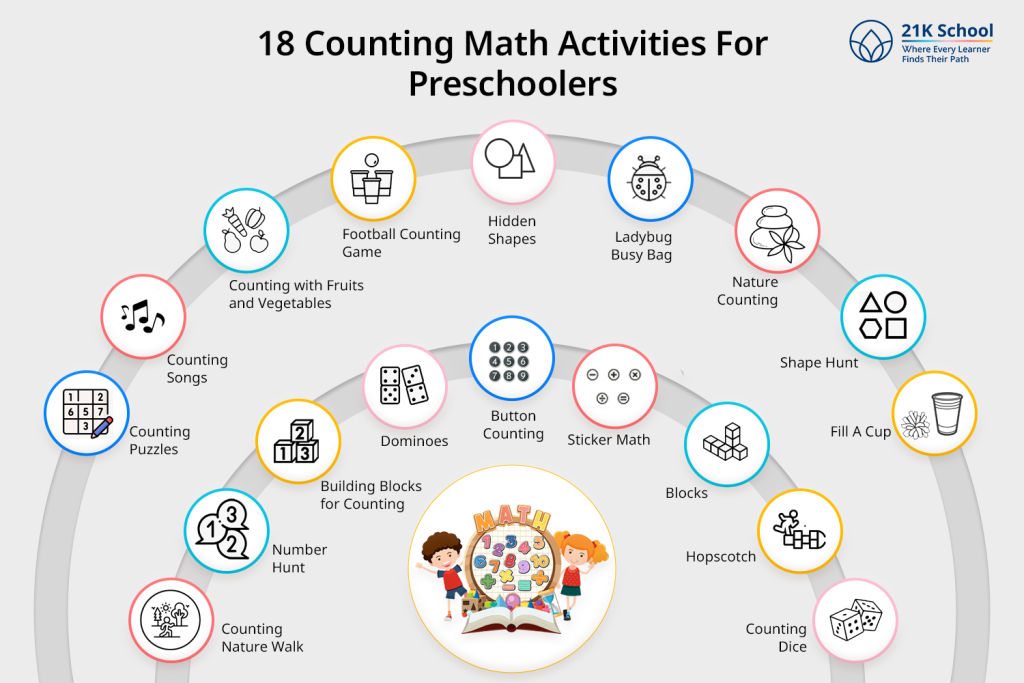
Children between the ages of 3 and 5 or learning in preschool always engage in learning difficult subjects like math. One can also explore the top learning maths websites for kids.
But what if learning becomes a fun and engaging activity? Let’s explore top 18 Counting Math Activities For Preschoolers:
1. Counting Nature Walk
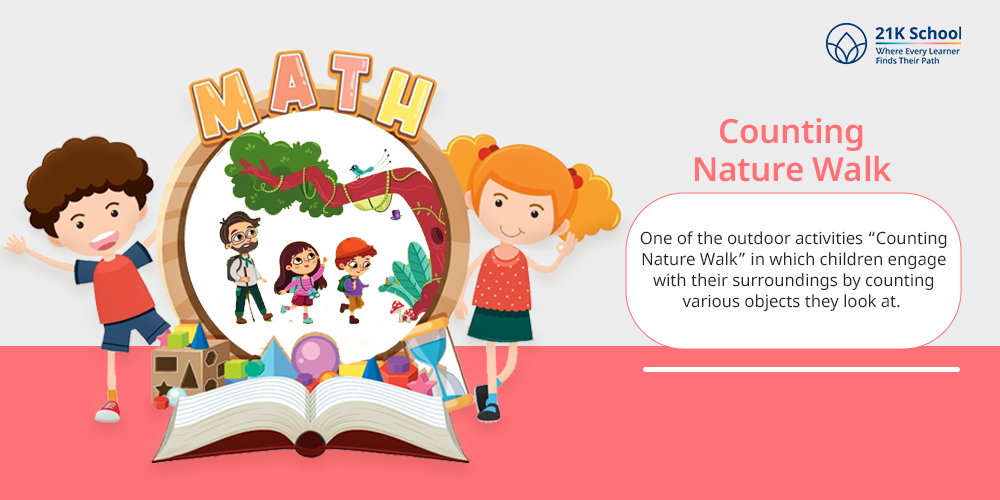
One of the outdoor activities “Counting Nature Walk” in which children engage with their surroundings by counting various objects they look at.
Kids can count trees, branches, rocks, or any other natural element. This makes a simple walk into a learning activity.
- Materials Used: Paper or notebook, crayons or markers, basket or bag for collecting items.
- How to Do It: Visit various places or walk outside and ask kids to find and count specific natural items. For example sticks, rocks, leaves, or flowers. Parents can ask, “Can you find 3 leaves?” or “Let’s count 5 roses.”
- Pro Tips: For added excitement make it into a scavenger hunt. Walk new places and make a target for big numbers.
2. Number Hunt
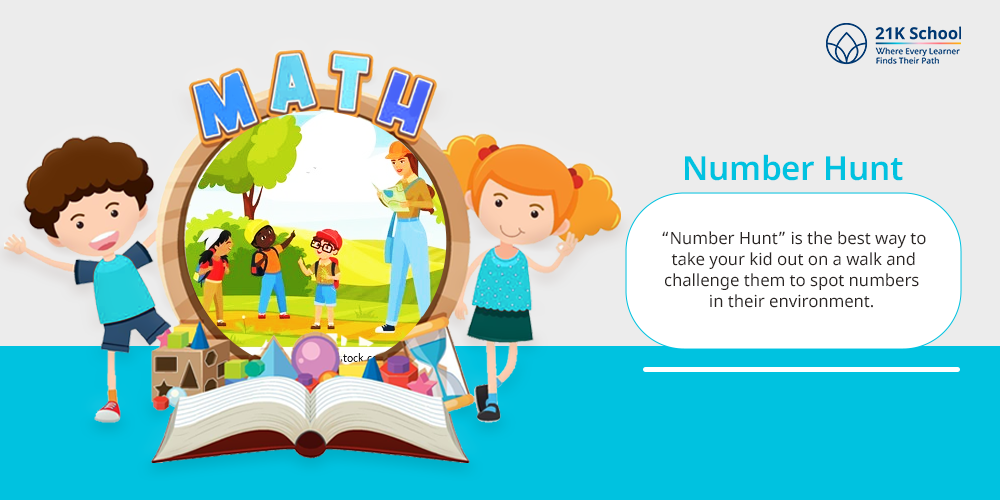
“Number Hunt” is the best way to take your kid out on a walk and challenge them to spot numbers in their environment.
You can also ask them to draw all the numbers they can identify or take photos as you go.
- Materials Used: Sticky notes, marker, small basket or container.
- How to Do It: Write numbers based on your kid learning speed on sticky notes. Then hide them in different corners around a room. Let your kid find the notes and place them in order.
- Pro Tips: Use different colors for odd and even numbers. By this way kids can learn colors and numbers together.
3. Building Blocks for Counting
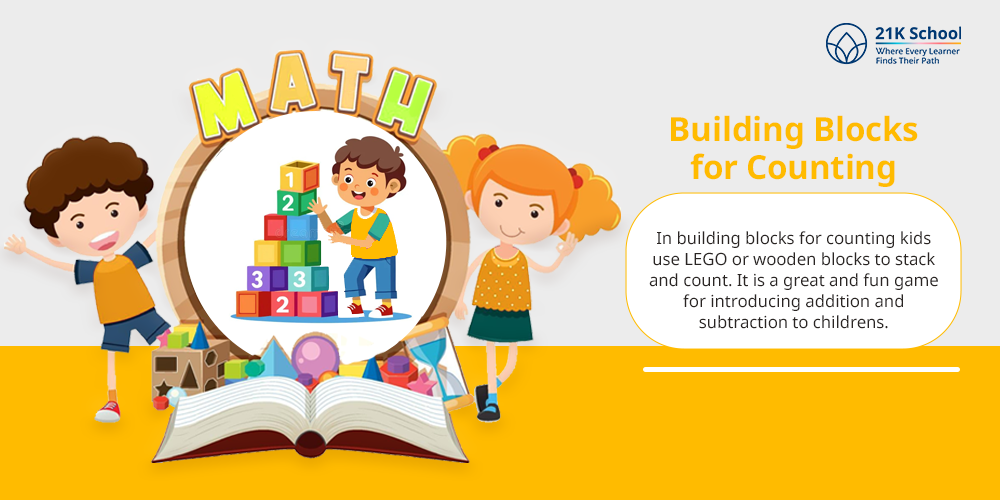
In building blocks for counting kids use LEGO or wooden blocks to stack and count.
It is a great and fun game for introducing addition and subtraction to childrens.
- Materials Used: LEGO or DUPLO blocks, number cards.
- How to Do It: Provide number cards and ask children to build towers with the corresponding number of blocks.
- Pro Tips: Parents and facilitators can introduce different patterns to mix counting with early pattern recognition.
4. Dominoes
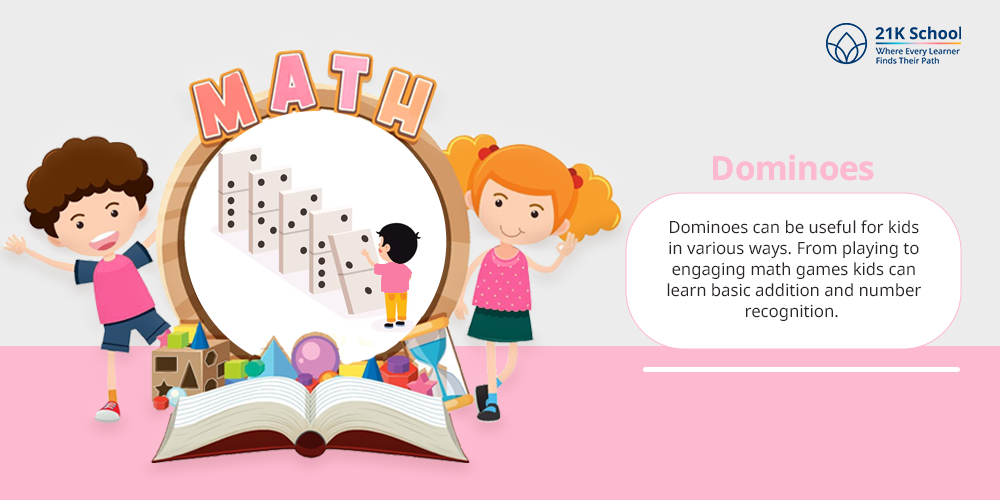
Dominoes can be useful for kids in various ways. From playing to engaging math games kids can learn basic addition and number recognition.
It provides more advanced concepts like fractions and place value. Dominoes games are ideal for different age groups and skill levels.
This makes it a versatile tool for learning math in modern education.
- Materials Used: Set of dominoes and area to play.
- How to Do It: Use dominoes to count the number of dots to remember forward and backwards counting. Kids can arrange or line them up in numerical order for understanding sequence.
- Pro Tips: You can ask kids to find dominoes that add up to a specific number which improves mental health.
5. Button Counting
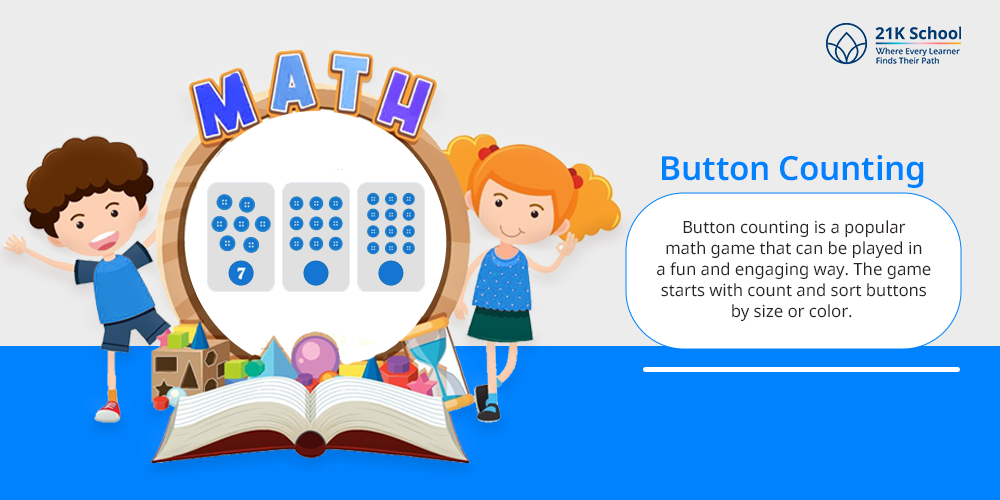
Button counting is a popular math game that can be played in a fun and engaging way. The game starts with count and sort buttons by size or color.
The activity helps children learn and practice various mathematical concepts. Button counting is great for fine motor skills of kids.
- Materials Used: Assorted buttons, muffin tin or small cups or number cards.
- How to Do It: Offer kids a unique shape and size of buttons and a number card. Ask them to place the correct number of buttons into each cup or tin slot.
- Pro Tips: Kids can pick by color or size after counting to reinforce classification skills. By picking up buttons and building fine motor skills from an early age.
6. Sticker Math
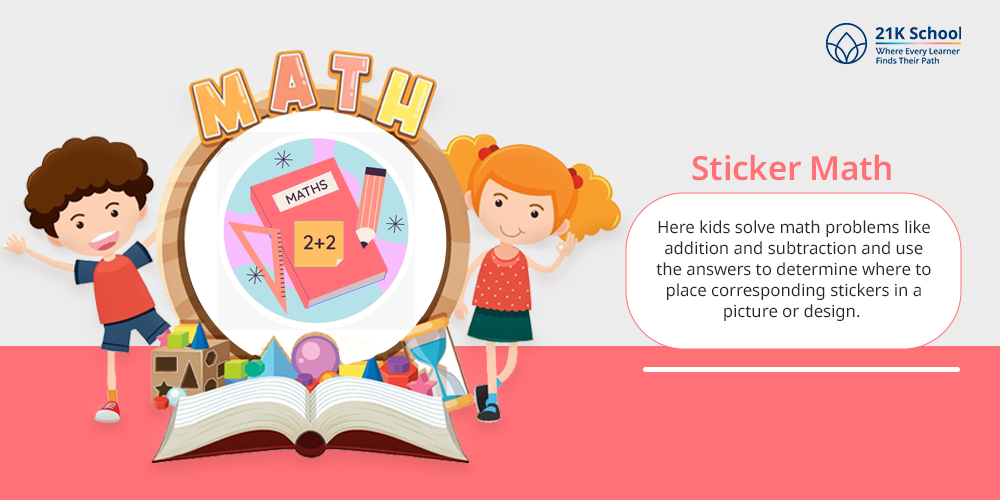
A “Sticker Math” is a unique and educational activity that combines sticker placement with mathematical problem-solving.
Here kids solve math problems like addition and subtraction and use the answers to determine where to place corresponding stickers in a picture or design.
This method makes math more easy, engaging and enjoyable for young learners.
- Materials Used: Sticker sheet, Paper, Marker.
- How to Do It: Start with writing large numbers on a piece of paper. Have children place the matching number of stickers inside each number outline.
- Pro Tips: For engagement use themed stickers like different animals, or shapes.
7. Blocks
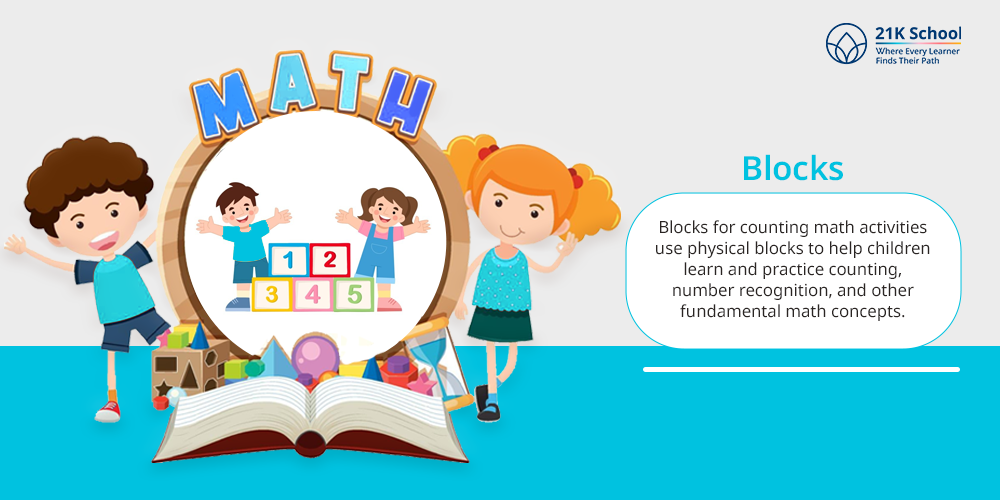
Blocks for counting math activities use physical blocks to help children learn and practice counting, number recognition, and other fundamental math concepts.
- Materials Used: Wooden or foam blocks, dice.
- How to Do It: Roll the dice and have your child stack or line up the same number of blocks as the number rolled.
- Pro Tips: Play with a timer for a fun challenge.
8. Hopscotch
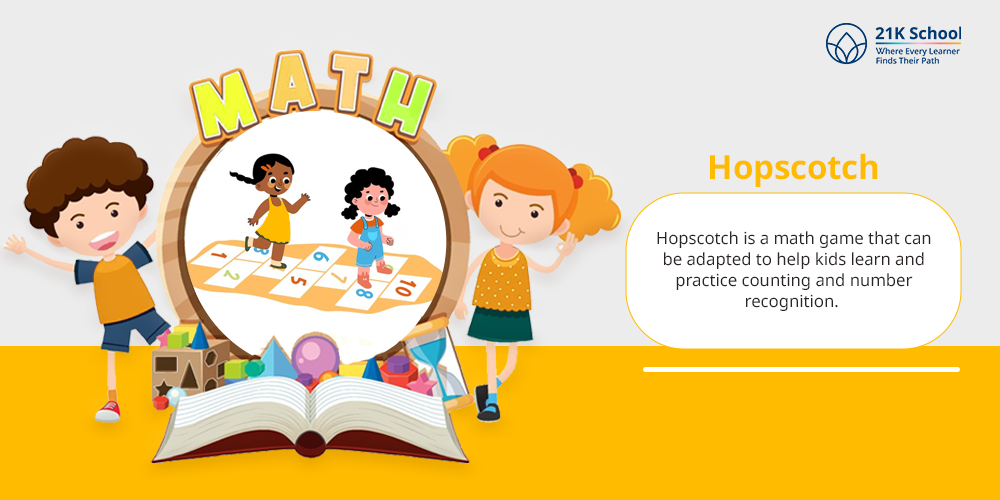
Hopscotch is a math game that can be adapted to help kids learn and practice counting and number recognition.
This game is ideal for kids basic counting with playing.
- Materials Used: Chalk for outdoor activity for kids or tape for indoor activity and open space.
- How to Do It: Draw a hopscotch grid and write numbers in sequence. Let kids hop on each square and call out the number to learn.
- Pro Tips: Also play as backward counting to reinforce subtraction concepts.
9. Counting Dice
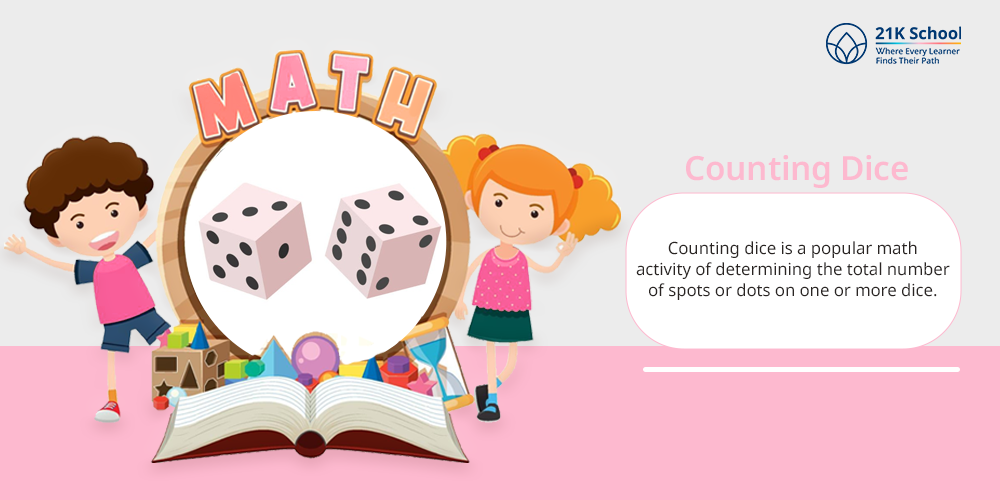
Counting dice is a popular math activity of determining the total number of spots or dots on one or more dice. It is used in games or as a learning tool.
- Materials Used: Dice, paper and crayons.
- How to Do It: Roll the dice and draw the number of items shown. For example, roll a 5 and draw 5 circles.
- Pro Tips: Use two dice to introduce basic addition. Let kids play their own way.
10. Counting Puzzles
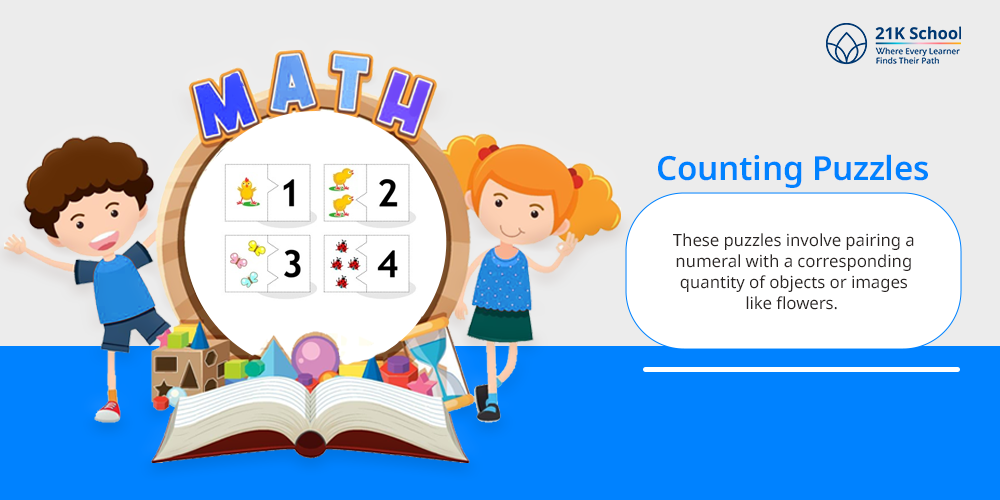
Counting puzzles are educational activities popular in kids which help them learn to count and recognize numbers.
These puzzles involve pairing a numeral with a corresponding quantity of objects or images like flowers.
It is a two-piece puzzle in which one piece consists of a number and the other shows a group of items that matches that number.
- Materials Used: Printable counting puzzles (cut in half) and laminator.
- How to Do It: Kids connect number pieces with the correct quantity image. If a puzzle piece with 5 matches with a piece showing 5 apples.
- Pro Tips: Mix in some wrong matches and ask them to rearrange currently to encourage critical thinking skills.
11. Counting Songs
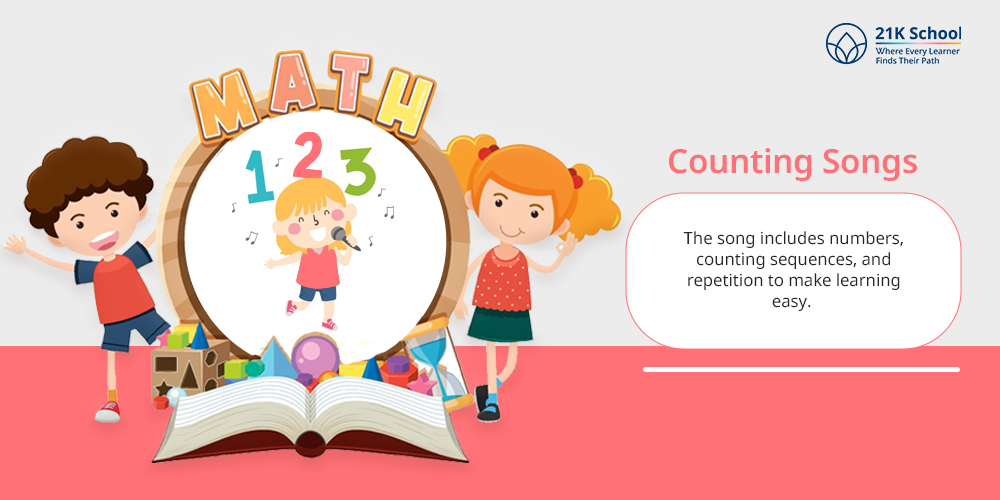
Counting songs are fun and engaging songs especially created for kids to learn how to count.
The song includes numbers, counting sequences, and repetition to make learning easy.
These songs also consider both forward and backward counting for kids deep learning.
- Materials Used: Songs like “Five Little Ducks” or “Ten in the Bed” are popular with children.
- How to Do It: Sing with your kid to ensure they are pronouncing right and use fingers or toys to act out the story.
- Pro Tips: Let them try on their own after a couple of practices. Also try new songs for engagement.
12. Counting with Fruits and Vegetables
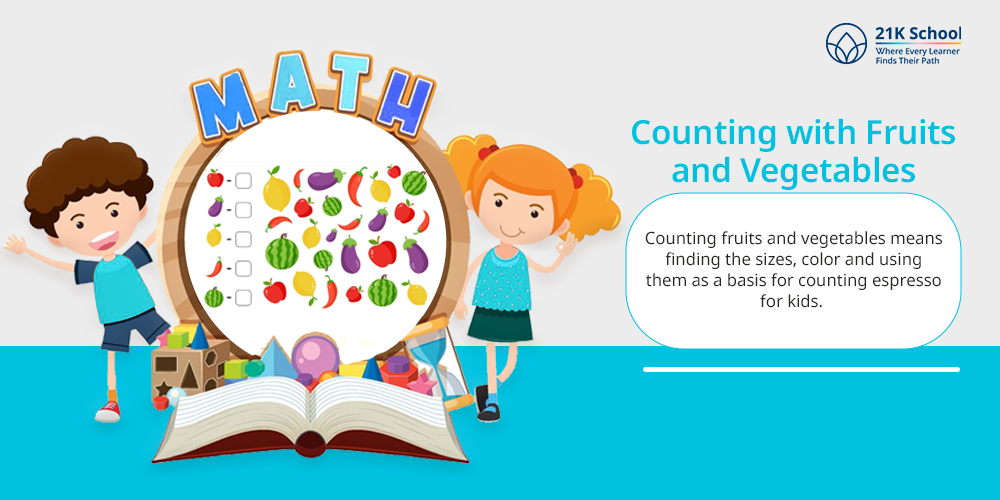
Counting fruits and vegetables means finding the sizes, color and using them as a basis for counting espresso for kids.
- Materials Used: Fruit or veggies like grapes, carrots, etc, plate or bowl.
- How to Do It: Ask children how many vegetables are in the basket. For example, Can you give me 2 apples?
- Pro Tips: Encourage them to count before eating chocolates.
13. Football Counting Game
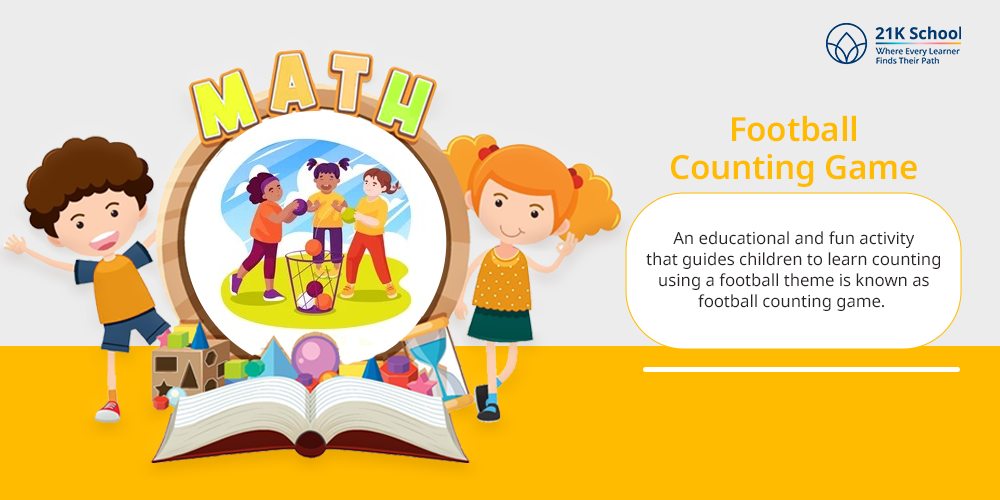
An educational and fun activity that guides children to learn counting using a football theme is known as football counting game.
If your kid loves to play games then these free maths games for kids can be their next favorite.
- Materials Used: Mini footballs or balls, bins or buckets labeled with numbers.
- How to Do It: The game starts with throwing or rolling the ball into a bucket. Then counting how many balls land in each.
- Pro Tips: Assign point values to each bucket for older preschoolers.
14. Hidden Shapes
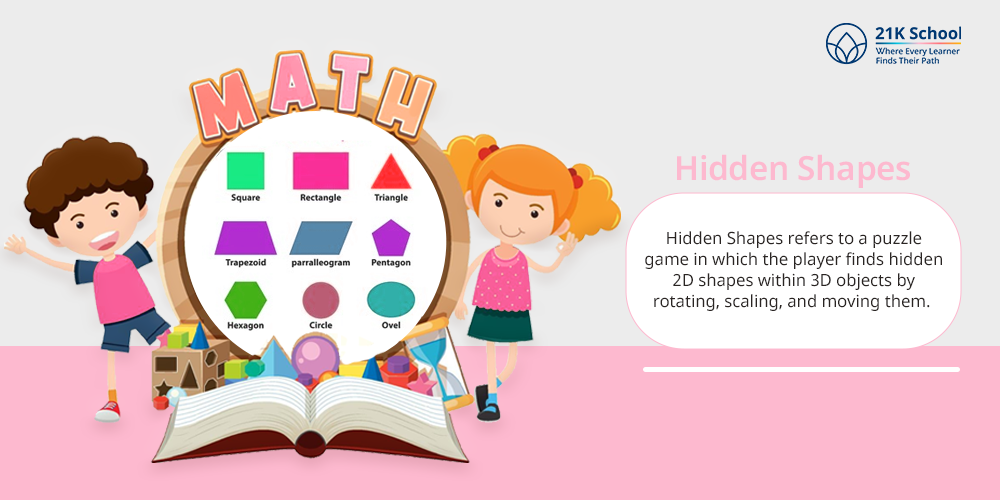
Hidden Shapes refers to a puzzle game in which the player finds hidden 2D shapes within 3D objects by rotating, scaling, and moving them.
These shapes are in different colors and numbers written on them which engage children a lot.
- Materials Used: Cut-out shapes with numbers written on them and blanket or sensory bin.
- How to Do It: Parents can hide small to big numbers under the table or matters filled with rice or sand. Let children find and count them.
- Pro Tips: Children can identify both the number and the shape which is sorted by the type or number later.
15. Ladybug Busy Bag
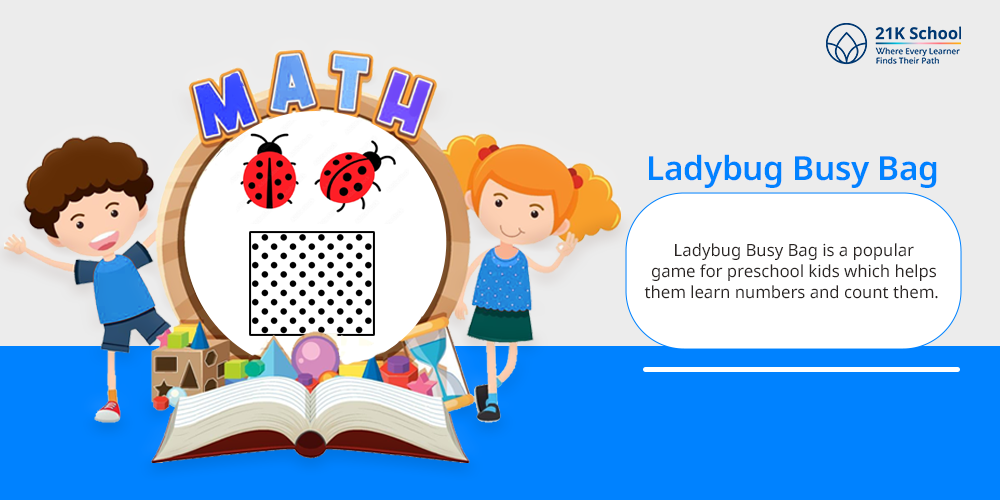
Ladybug Busy Bag is a popular game for preschool kids which helps them learn numbers and count them.
The game is best for children especially in quiet time engagement both at home and school.
- Materials Used: Felt ladybugs, black dot stickers or felt dots and number cards.
- How to Do It: Start by giving some paper ladybug pictures and a number card. Then ask them to place the matching number of black dots the ladybug is having.
- Pro Tips: Use different animal pictures like zebras, giraffes and leopards.
16. Nature Counting

Nature counting or nature walk counting math activity for preschoolers is an easy way to learn counting.
Here, parents can motivate kids to explore nature by counting leaves, rocks, or birds. This sparks their interest and strengthens their observation skills.
- Materials Used: Basket to collect. Tree leaves, fallen petals, acorns, pinecones, stones. Numbers of people in shops or gardens.
- How to Do It: Kids love to gather natural materials like unique stones and count and decorate them into numbered containers.
- Pro Tips: Design the natural objects like leaves and stone through acrylic painting or preserve them in a box as a souvenir.
17. Shape Hunt
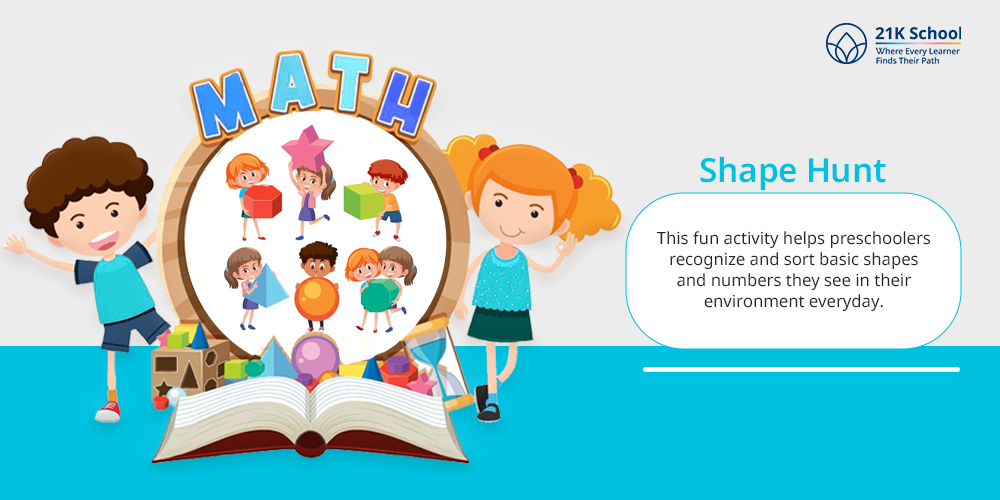
Kids go on a “shape hunt game” around the house or outdoors. It directs them towards everyday objects. For example, shaped like squares, triangles, or numbers written on board or shops.
This fun activity helps preschoolers recognize and sort basic shapes and numbers they see in their environment everyday.
- Materials Used: Shape cutouts or printables and baskets.
- How to Do It: Hide various shape cutouts around the room. Or let them find them in nearby areas like malls or restaurants.
- Pro Tips: Encourage teamwork by pairing up children or pairs 2 or more children.
18. Fill A Cup
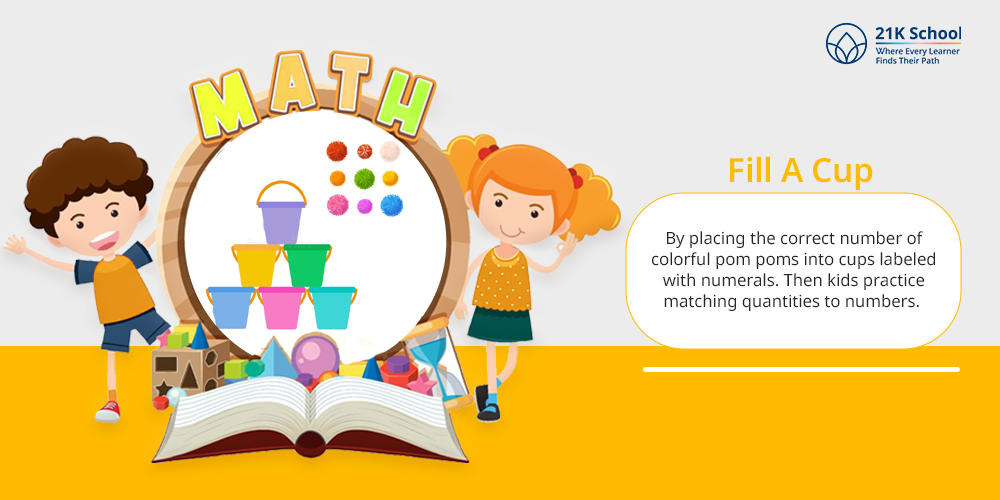
This activity makes learning fun for children while strengthening their counting skills, number recognition, and fine motor skills development.
By placing the correct number of colorful pom poms into cups labeled with numerals. Then kids practice matching quantities to numbers.
This helps them build a deeper understanding of counting concepts.
- Materials Used: Measuring cups or plastic cups, pom-poms, beans, and number cards.
- How to Do It: Place cups in front of children and let them give a number card. Kids will collect the number of items and put them in glass.
- Pro Tips: Look for different-sized cups and unique material to make them familiar.
Conclusion
Counting is crucial to learn future complex numerical questions. It can be learned through an adventure, a song, a game, or even a snack!
The key to helping preschoolers develop strong math skills lies in creating playful, sensory-rich environments that invite exploration and experimentation.
These are more than 18 counting math activities that provide a variety of ways to introduce and implement counting. For example, nature walks, building blocks and counting songs.
By integrating movement, music, and everyday items, facilitators and parents can guide kids in counting and enjoyable meaningful learning of your online preschool kid’s world..
Kids can also learn how to learn maths easily. Try a few of these activities with your kid and watch them discover the joy in numbers!

